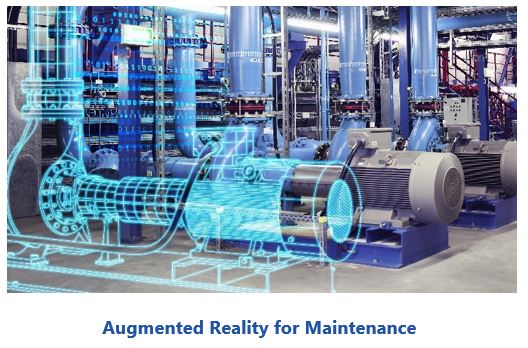

Multiple technologies have emerged in recent years that are instrumental in driving the advancement of smart manufacturing and the Industrial IoT. These include Big Data, advanced analytics, artificial intelligence (AI) and machine-learning (ML), operational intelligence, advanced robotics, cyber-physical systems, next-generation material science, and generative design for additive manufacturing. However, while all these technologies are changing the face of manufacturing today, ARC Advisory Group research suggests that the Industrial IoT, connected smart assets, and especially the digital twin are having the most immediate and significant impact on how companies implement smart manufacturing.
The basic concept of the digital twin is not new. This involves merging virtual engineering models with the physical product or equipment in an environment that allows for change and optimization of the as-designed and as-built product. However, due to the advancement and evolution of enabling technologies, we’re seeing renewed focus on the implementation of the digital twin and associated benefits that could be gained. Using digital twins that represent the product and production systems, manufacturers can reduce the time and cost associated with assembling, installing, and validating factory production systems. Additionally, implementing digital twins for asset management typically provides quantifiable benefits for maintaining equipment in the field.
In manufacturing, the digital twin is a virtual representation of the as-designed, as-built, and as-maintained physical product; augmented by real-time process data and analytics based on accurate configurations of the physical product, production systems, or equipment. This is, in essence, the operational context of the digital twin needed to support performance optimization. While virtual models are conceptual in nature, the real-time and operational data is a digital representation of real physical events. CAD models represent the virtual fit, form, and function of the digital twin’s physical counterpart. However, real-time operational and asset data are required to execute analytics applications that define the state and behavior of the performance-based digital twin and allow optimization and process improvement.
Based on real-world implementations, manufacturers are considering new business models where they sell service in lieu of the product itself and then utilize the digital twin to monitor and optimize its availability and performance. Customers are offered the use of the product/equipment along with complete maintenance and operational optimization based on the predictive/prescriptive capabilities of the digital twin. The manufacturer maintains ownership of the equipment while providing the service of maintenance based on a digital twin as a more manageable and profitable business model.
One of the initial areas of focus for implementation of the digital twins has been asset lifecycle management (ALM). Maintaining assets in the field has traditionally been a time-consuming and costly task, but critical to equipment and 
Today’s advanced virtual simulation technology is an integral component of the digital twin. Comprehensive simulation platforms can simulate and validate the functionality of product design concurrently, enabling the designers to validate their designs as they go. In the context of the digital twin, real-time sensor data can be used to populate simulation applications that then emulate the physical product and enable design improvements.
ARC Advisory Group clients can view the complete report at ARC Client Portal
If you would like to speak with the author, please Contact Us

